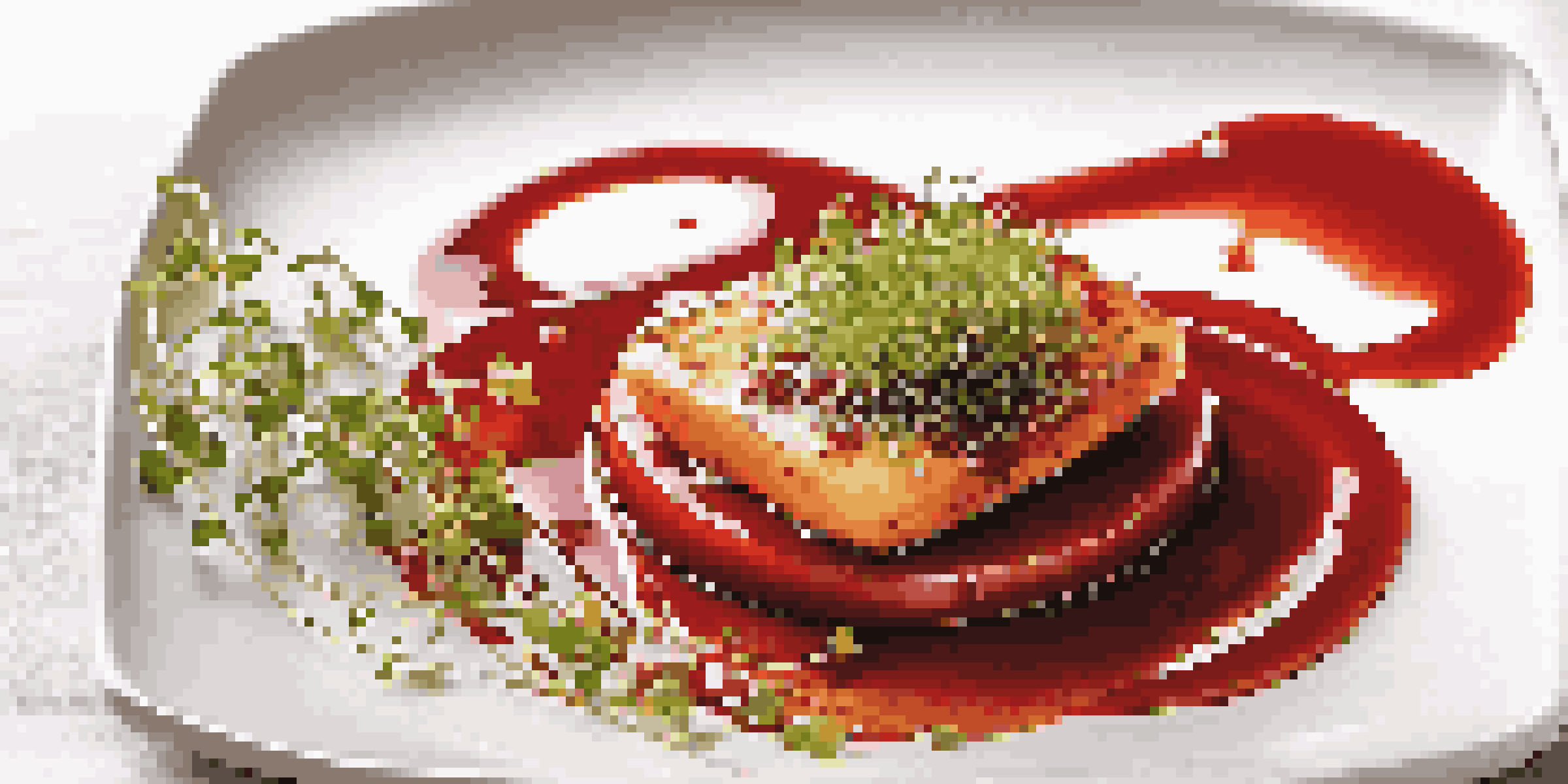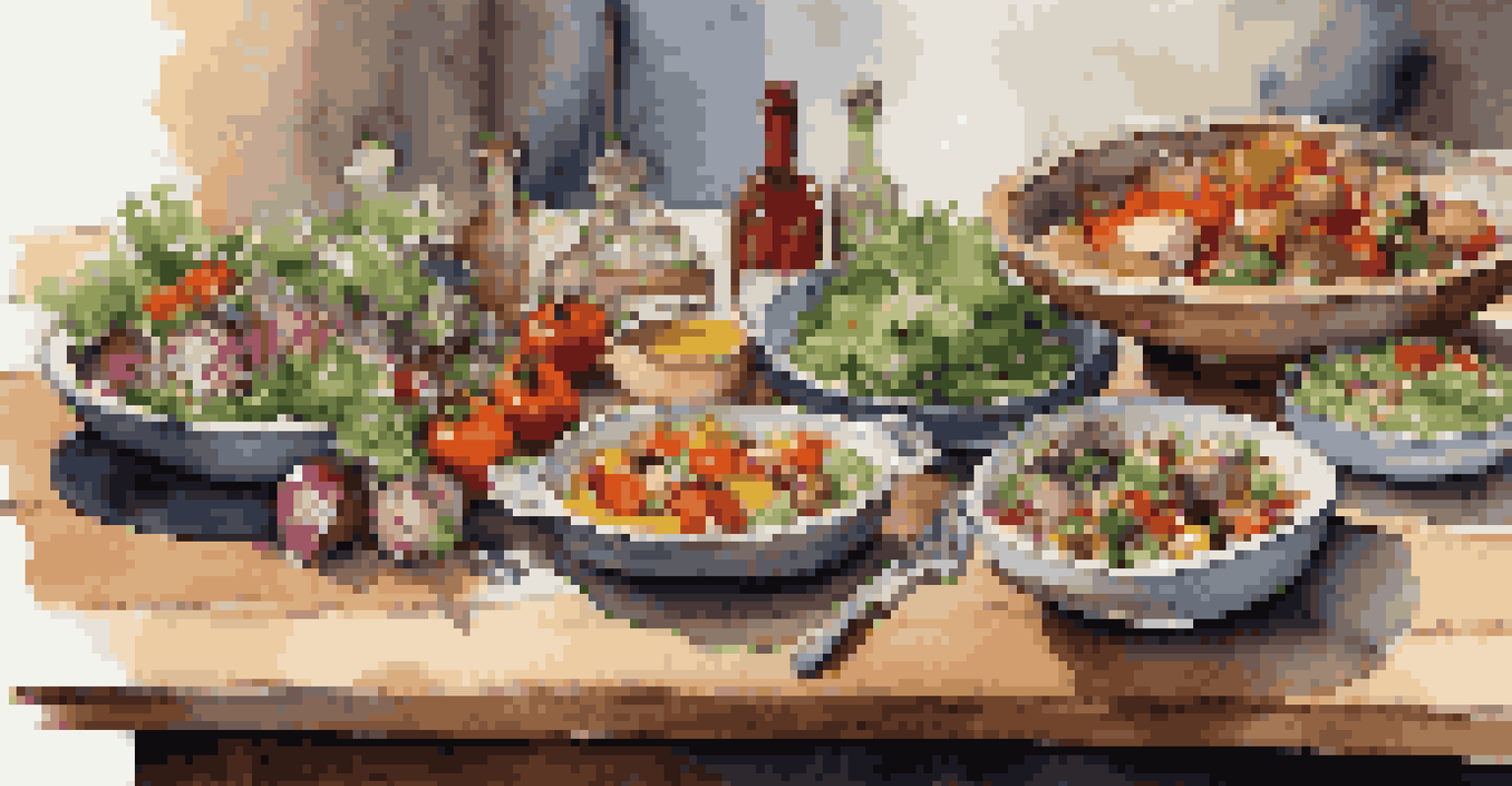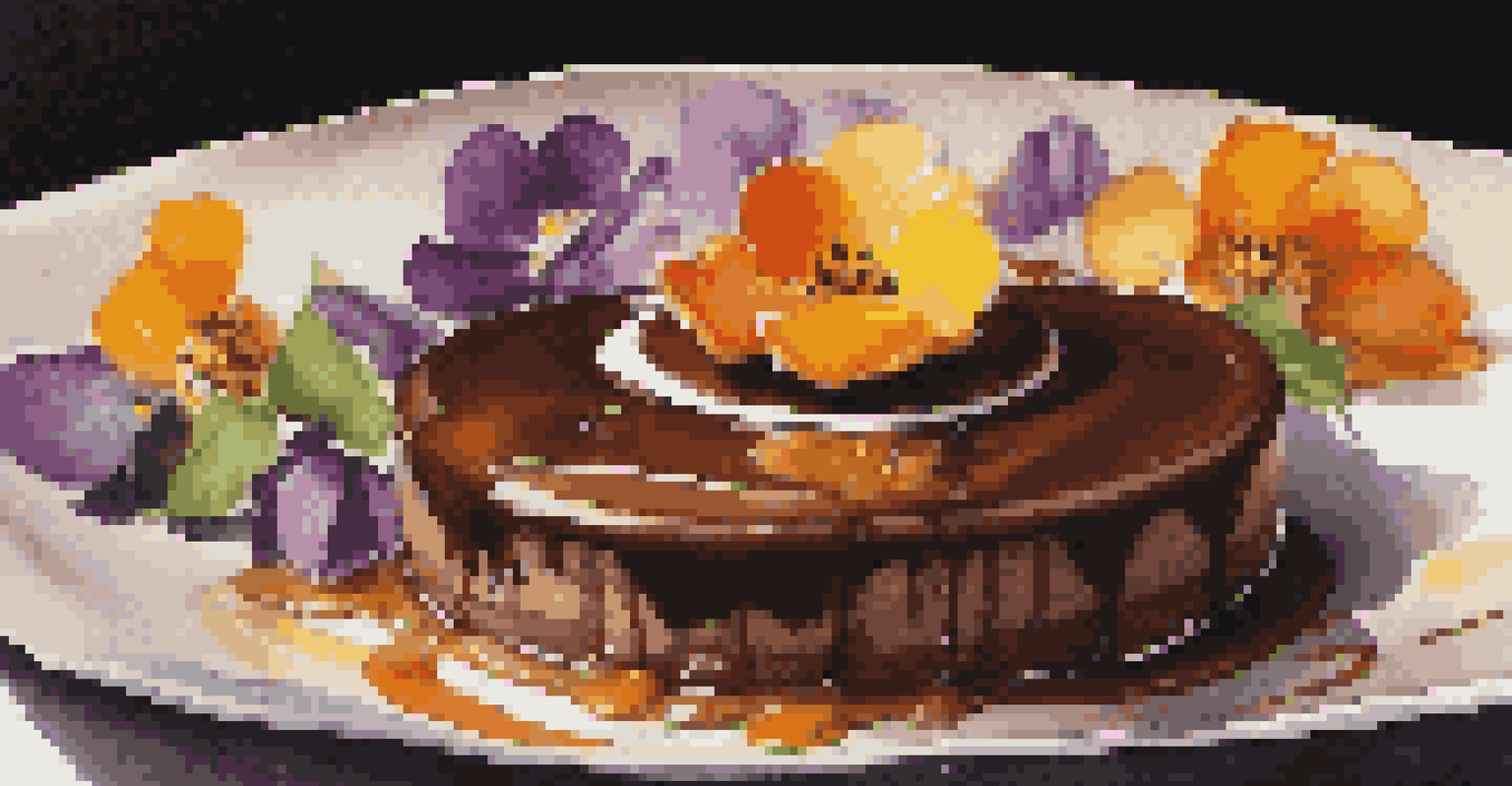The Role of Presentation in Fine Dining: An Artistic Approach

Understanding the Importance of Food Presentation
Food presentation goes beyond just serving a meal; it creates an experience. In fine dining, how a dish looks can be just as vital as how it tastes. This visual appeal sets the tone for the entire dining experience, engaging not only the taste buds but also the eyes.
You eat with your eyes first.
Consider how a beautifully plated dish can evoke emotions and anticipation. A well-arranged plate can make even the simplest ingredients feel luxurious and special. It's like an artist's canvas, where each element plays a role in the overall masterpiece.
Ultimately, food presentation is about storytelling. It invites diners into a narrative, where each element contributes to a larger theme or concept, enhancing their connection to the meal.
The Artistic Techniques in Plating
Plating is an art form that requires precision, creativity, and an understanding of design principles. Techniques such as layering, color contrast, and symmetry are essential for creating visually appealing dishes. Just like an artist chooses colors carefully, chefs select ingredients that complement each other both in flavor and aesthetics.

For example, a vivid green sauce can brighten up a plate, while a delicate drizzle can add texture and intrigue. This attention to detail transforms the dish into a visual delight that captivates diners even before they take their first bite.
Food Presentation Enhances Experience
The visual appeal of food engages diners' senses, setting the tone for a memorable dining experience.
Moreover, the choice of plate can significantly influence perception. A minimalist white plate may highlight a colorful dish, while a rustic wooden board might evoke a more casual, homey feel. Each choice contributes to the dining experience, enhancing the overall presentation.
Cultural Influences on Food Presentation
Cultural backgrounds play a vital role in how food is presented, reflecting traditions and values. For instance, Japanese cuisine emphasizes simplicity and elegance, often showcasing the beauty of natural ingredients. This approach invites diners to appreciate the essence of each component rather than overwhelming them with complexity.
Food is art, and art is food.
In contrast, Mediterranean dishes often celebrate abundance and vibrant colors, using various ingredients to create a feast for the eyes. The cultural context not only shapes the aesthetics but also enhances the overall dining experience by connecting diners to the traditions behind the food.
Understanding these cultural nuances allows chefs to create dishes that resonate more deeply with patrons. It's a beautiful reminder that food is not just nourishment; it's a reflection of history and artistry.
The Role of Color in Food Presentation
Color plays a crucial role in food presentation, impacting perceptions of flavor and freshness. A dish bursting with vibrant colors can stimulate appetite and excitement, while muted tones may suggest blandness or lack of care. Chefs often use color theory to create visually appealing presentations that entice diners.
For example, a bright red sauce can signify richness and flavor, while fresh green herbs can add a touch of brightness and freshness. The juxtaposition of colors can create a visual rhythm that draws the eye and invites exploration of the plate.
Cultural Influences Shape Aesthetics
Cultural backgrounds inform food presentation, reflecting traditions and enhancing the dining experience.
By thoughtfully incorporating a variety of colors, chefs can elevate the dining experience, making it not only a meal but a celebration of visual beauty. This attention to color encourages diners to savor not just the taste but the entire visual spectacle.
Textures: Enhancing the Dining Experience
Textures are another essential aspect of food presentation that can significantly enhance the dining experience. Combining different textures—such as creamy, crunchy, and chewy—creates a multi-sensory experience that keeps diners engaged. This variety can transform a simple dish into a captivating culinary journey.
For example, a dish with a crispy topping over a smooth puree provides a delightful contrast that tantalizes the palate. Chefs often play with textures to surprise diners, making each bite a new experience.
Moreover, the way textures are presented visually can influence expectations. A dish that showcases layers of different textures can entice diners, encouraging them to explore and enjoy the nuances of each ingredient.
The Impact of Garnishes in Fine Dining
Garnishes are often the finishing touch that elevates a dish from ordinary to extraordinary. A well-chosen garnish not only enhances the visual appeal but also adds flavor and texture. In fine dining, garnishes are carefully selected to complement the dish rather than overshadow it.
For instance, a sprinkle of microgreens or edible flowers can add a pop of color and freshness, making the dish more inviting. These little details can create a sense of luxury and thoughtfulness in the presentation.
Color and Texture Elevate Dishes
Incorporating a variety of colors and textures makes dishes visually appealing and creates a multi-sensory experience.
Ultimately, garnishes are like the final brush strokes on a painting, completing the artwork and adding depth. They invite diners to appreciate the chef's attention to detail and creativity.
Creating a Memorable Dining Experience
The ultimate goal of food presentation in fine dining is to create a memorable experience for diners. When a dish is beautifully presented, it sets the stage for an unforgettable meal. This memorable experience often extends beyond the food itself, encompassing the ambiance, service, and overall atmosphere.
Consider how a well-presented dish can spark conversation among diners, turning a meal into a shared experience filled with appreciation and enjoyment. It’s these moments that linger in the mind long after the meal is over.

By prioritizing presentation, chefs and restaurateurs can create an environment that celebrates culinary artistry, fostering a deeper connection between the diner and the dish. This connection is what elevates fine dining from merely eating to an artful experience.